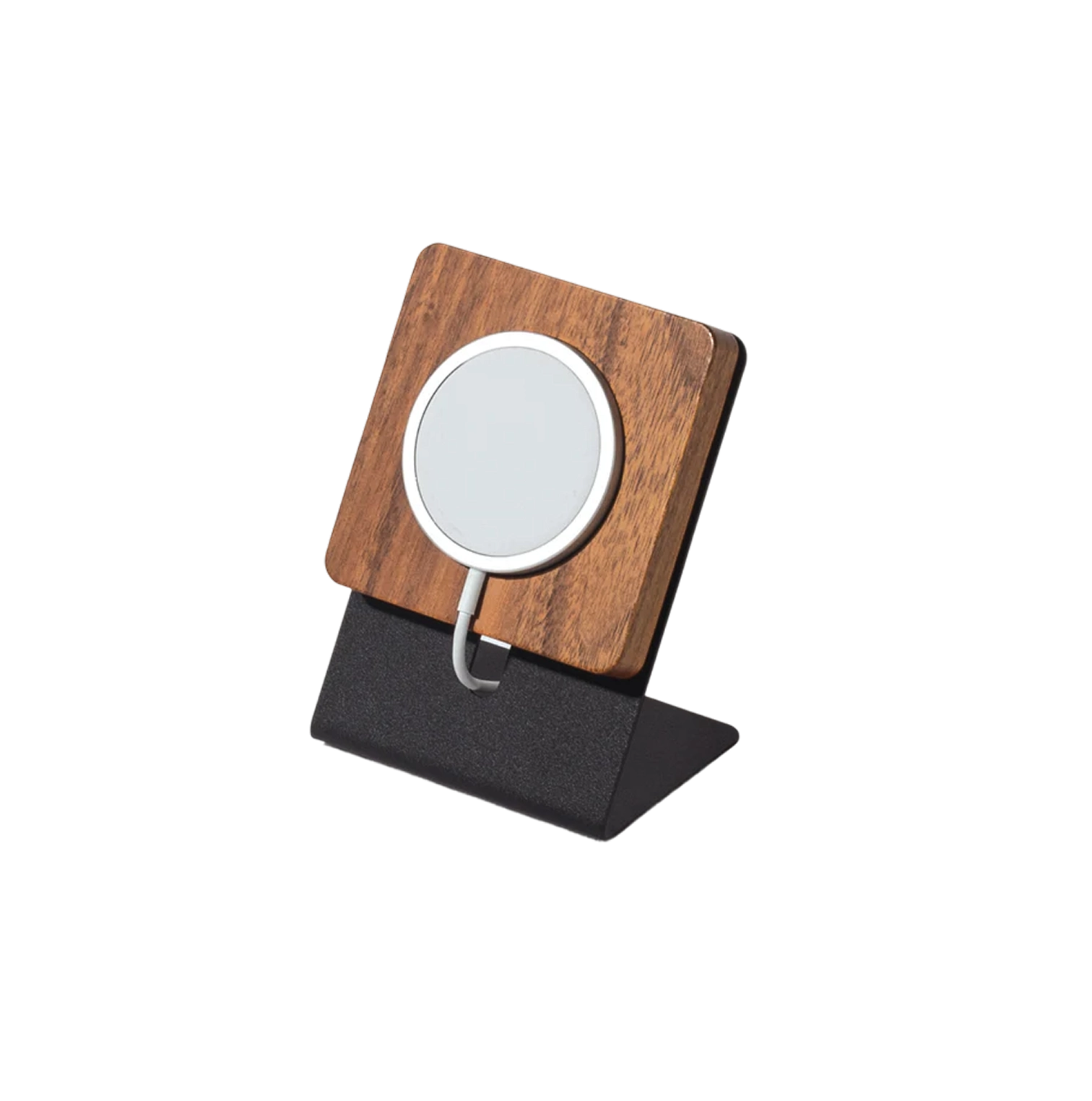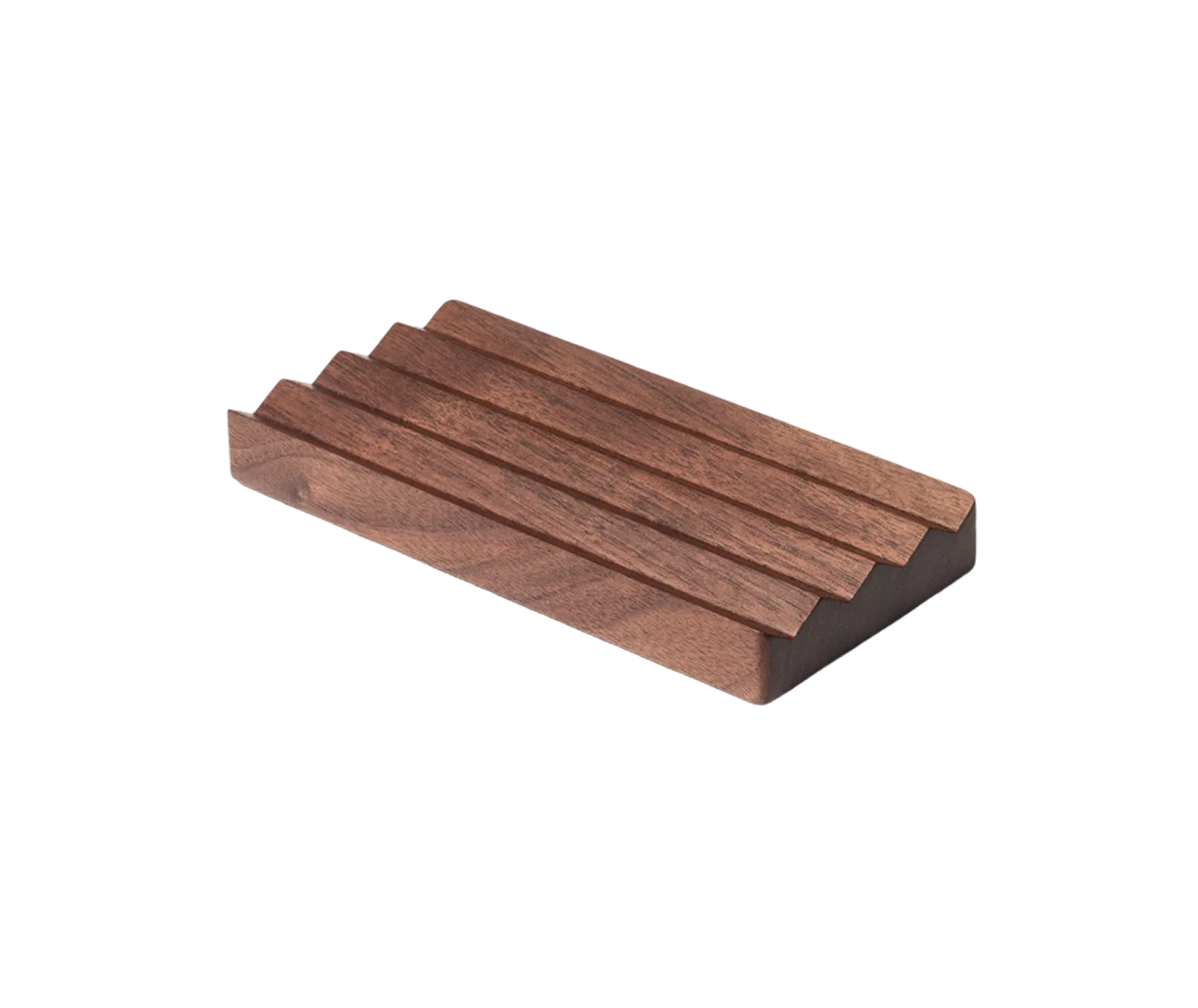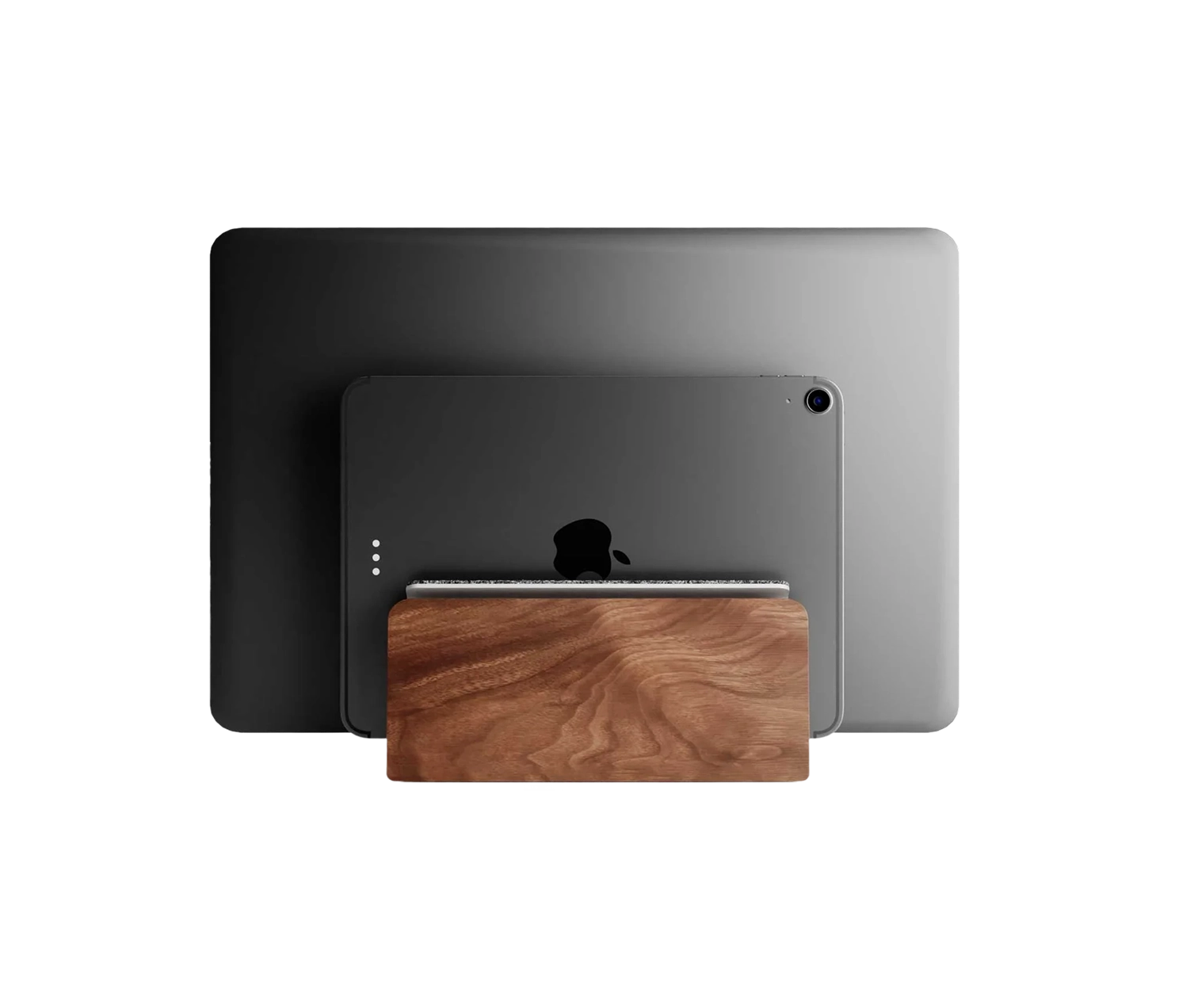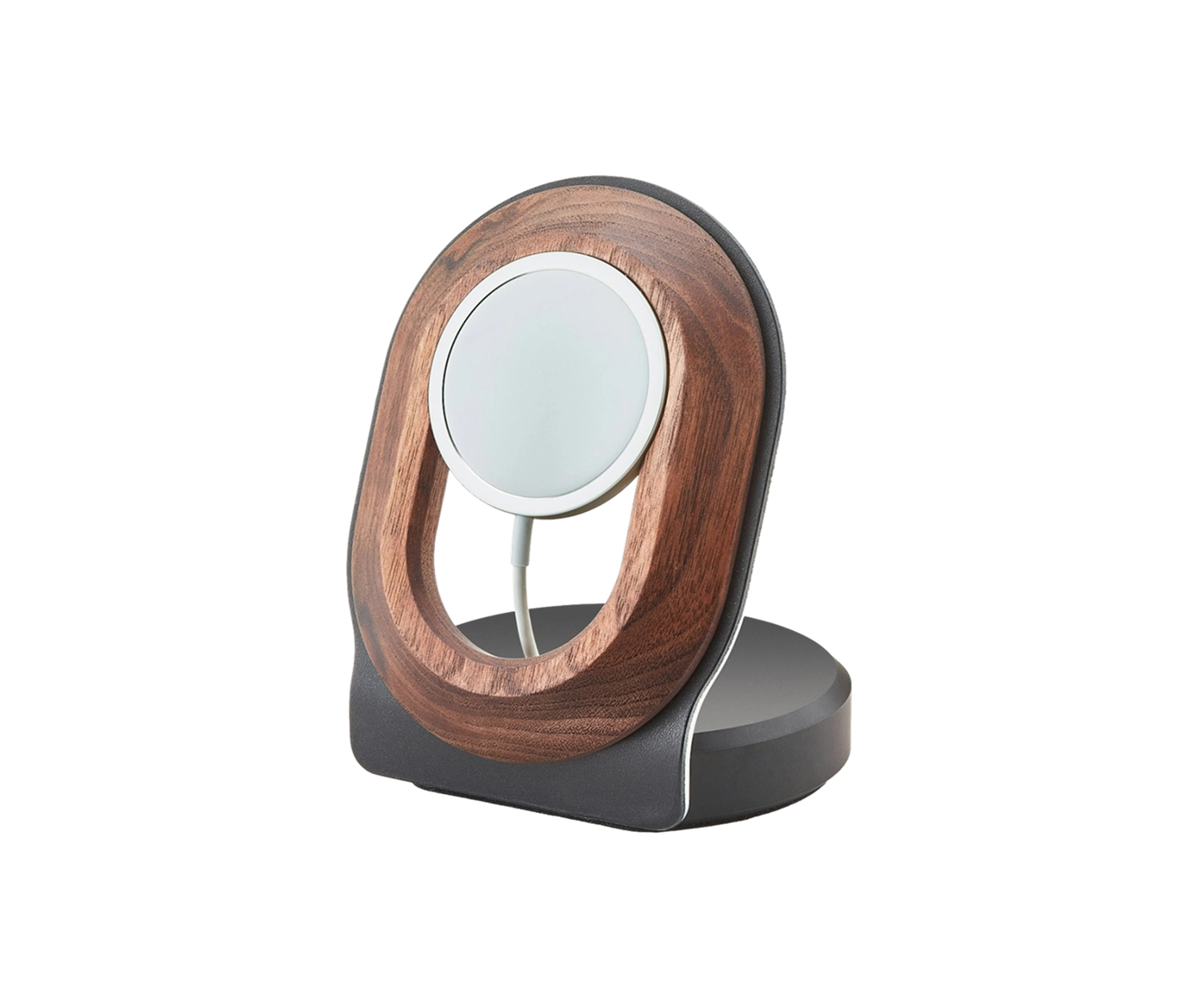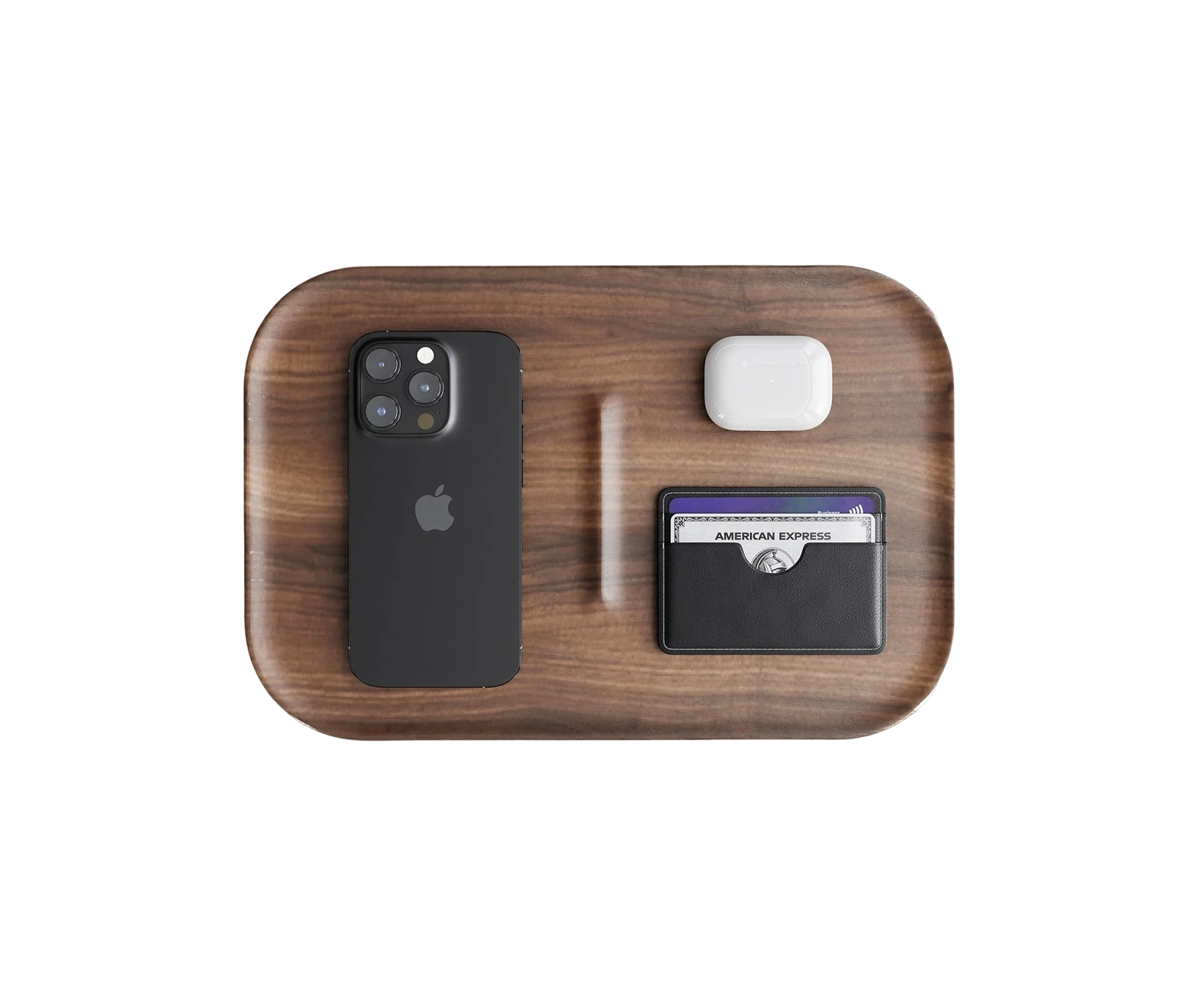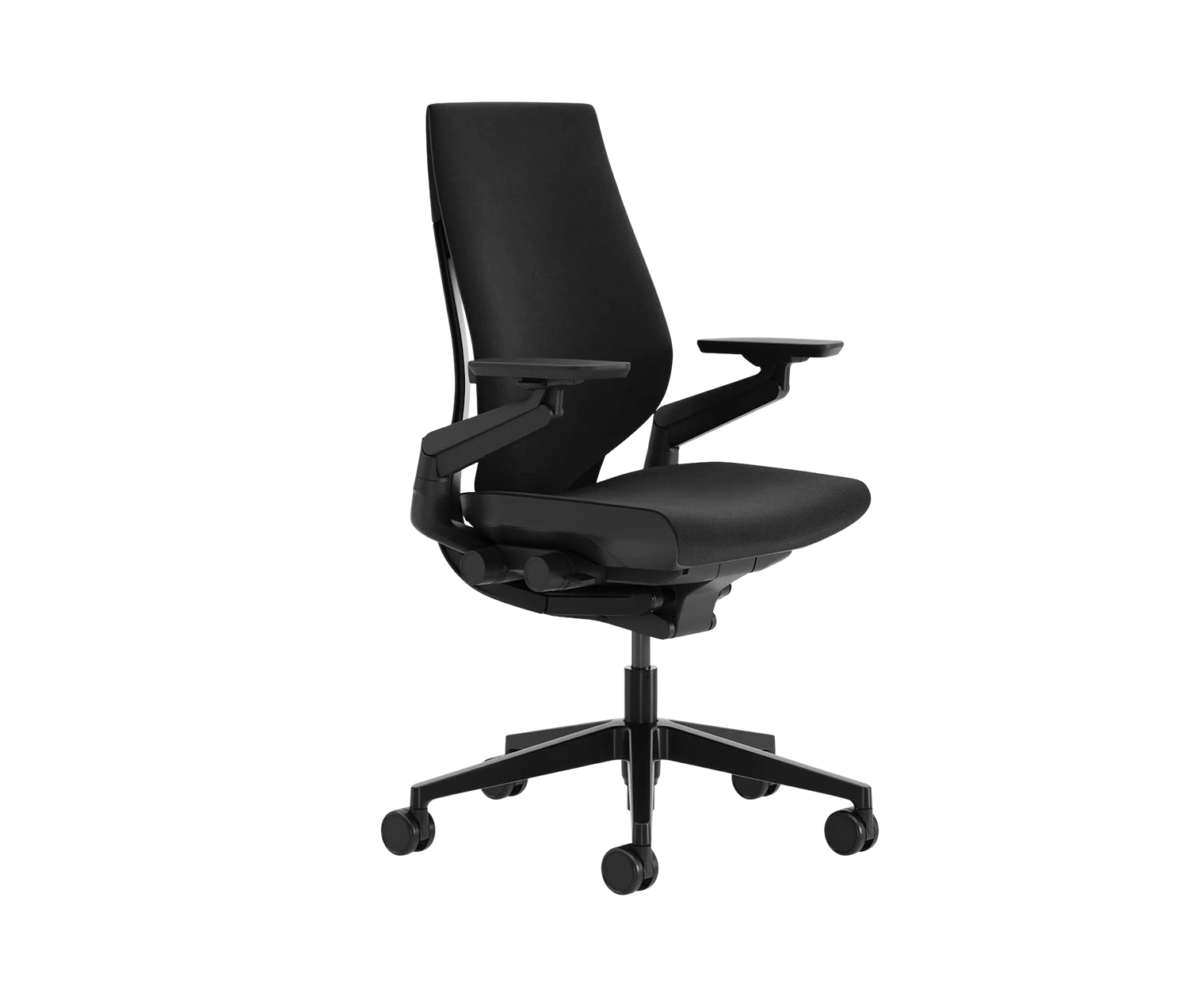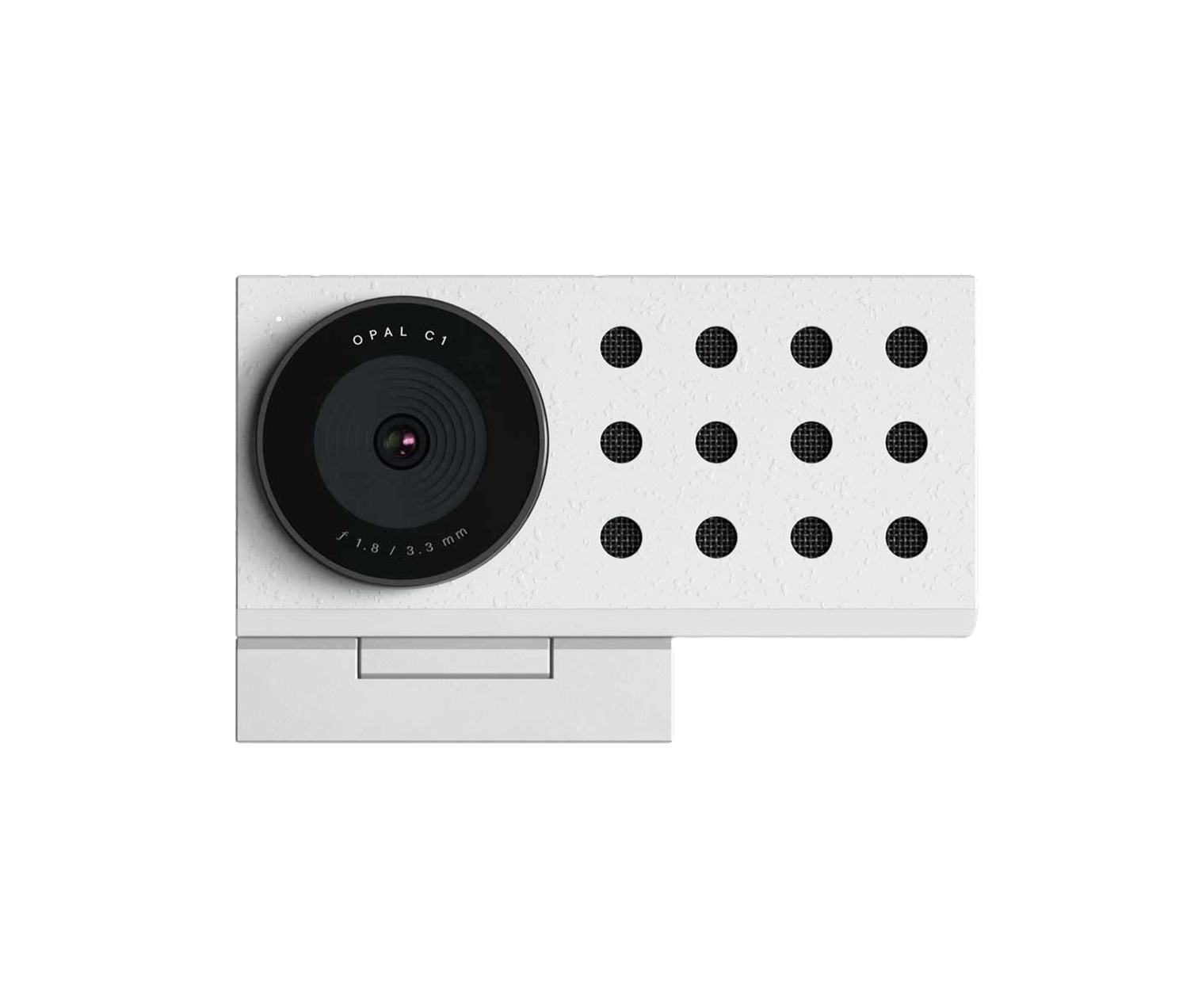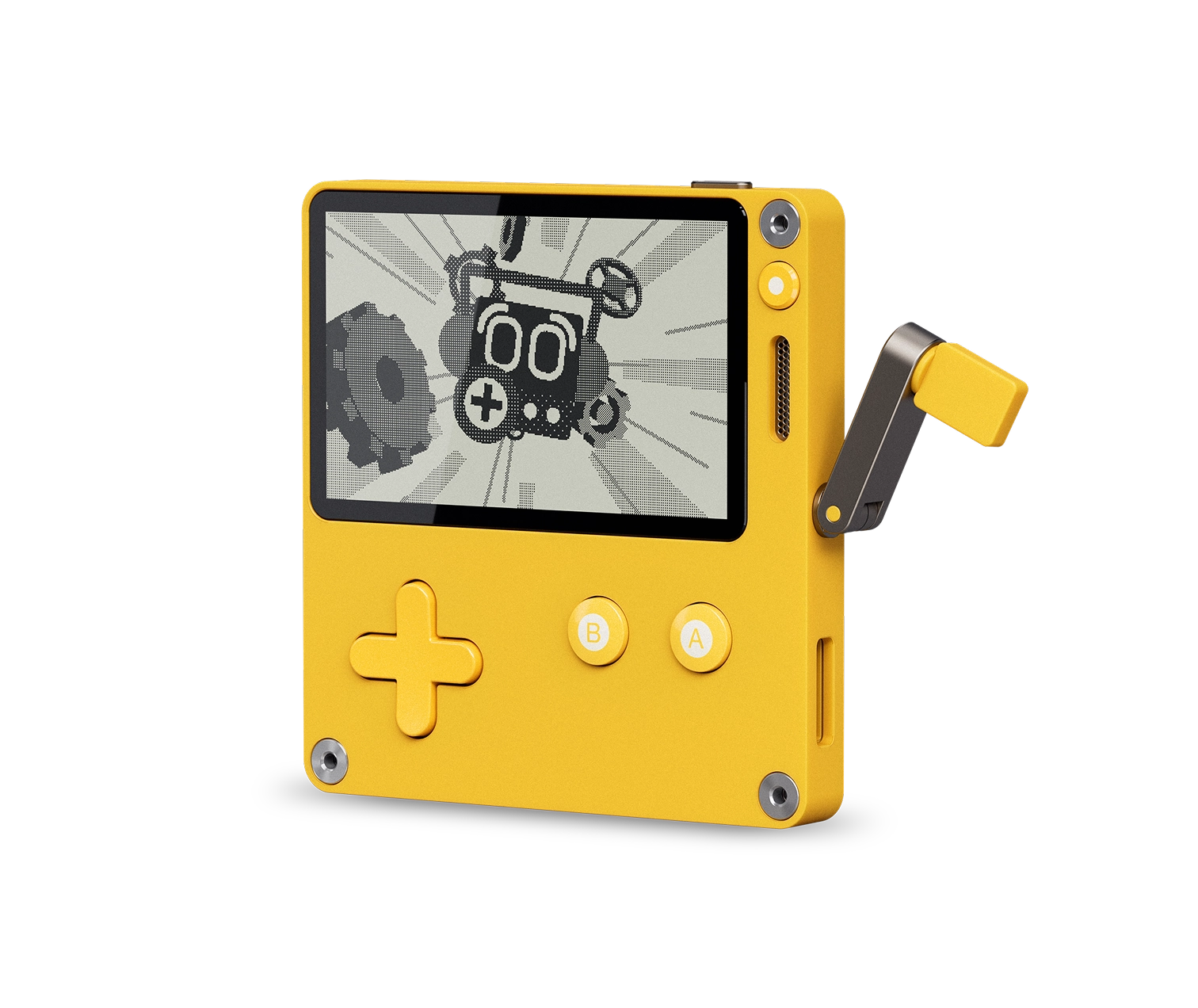Oct 16, 2025
·
·
A desk built from wood carries a different kind of presence. Not louder, but steadier. The grain becomes a point of focus during long afternoons. The weight of a tray or stand offers resistance that feels earned, not engineered.
In a workspace cluttered with screens and notifications, wooden desk accessories return a sense of material honesty. The rise of Japandi workspace design reflects this hunger for warmth within minimalism. Rooted in Scandinavian restraint and Japanese craft traditions, the aesthetic values negative space but refuses coldness.
Wood becomes the bridge between function and feeling. Objects are fewer, but each one matters. The result is a minimalist office design that breathes rather than shouts.
Materiality as Ritual
The Japandi Catchall Tray Valet from Raico exemplifies this ethos. Milled from solid walnut, the tray holds a phone, wallet, and AirPods without fuss. Its edges curve gently, a detail that registers only after repeated use. This is not storage for the sake of tidiness alone.
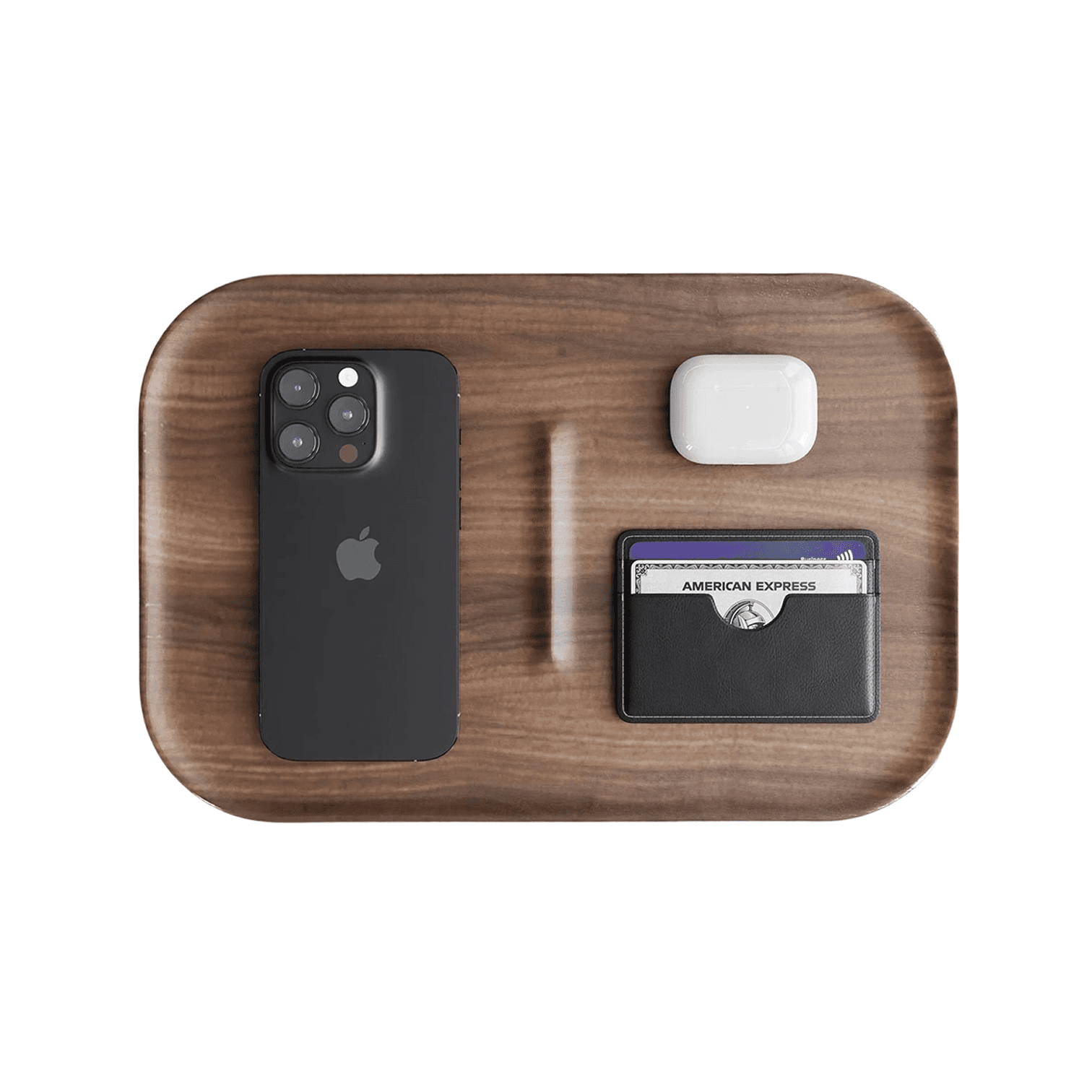
It creates a landing place, a small ceremony at the start and end of each workday. The act of placing objects deliberately shifts the tone of a morning. Natural wood desk organizers like this operate below the level of productivity hacks. They slow things down in a useful way.
Nearby, the Wood MagSafe Stand by Grovemade performs a similar service. Carved from a single block of walnut, its sculptural form suspends an iPhone at eye level while charging.
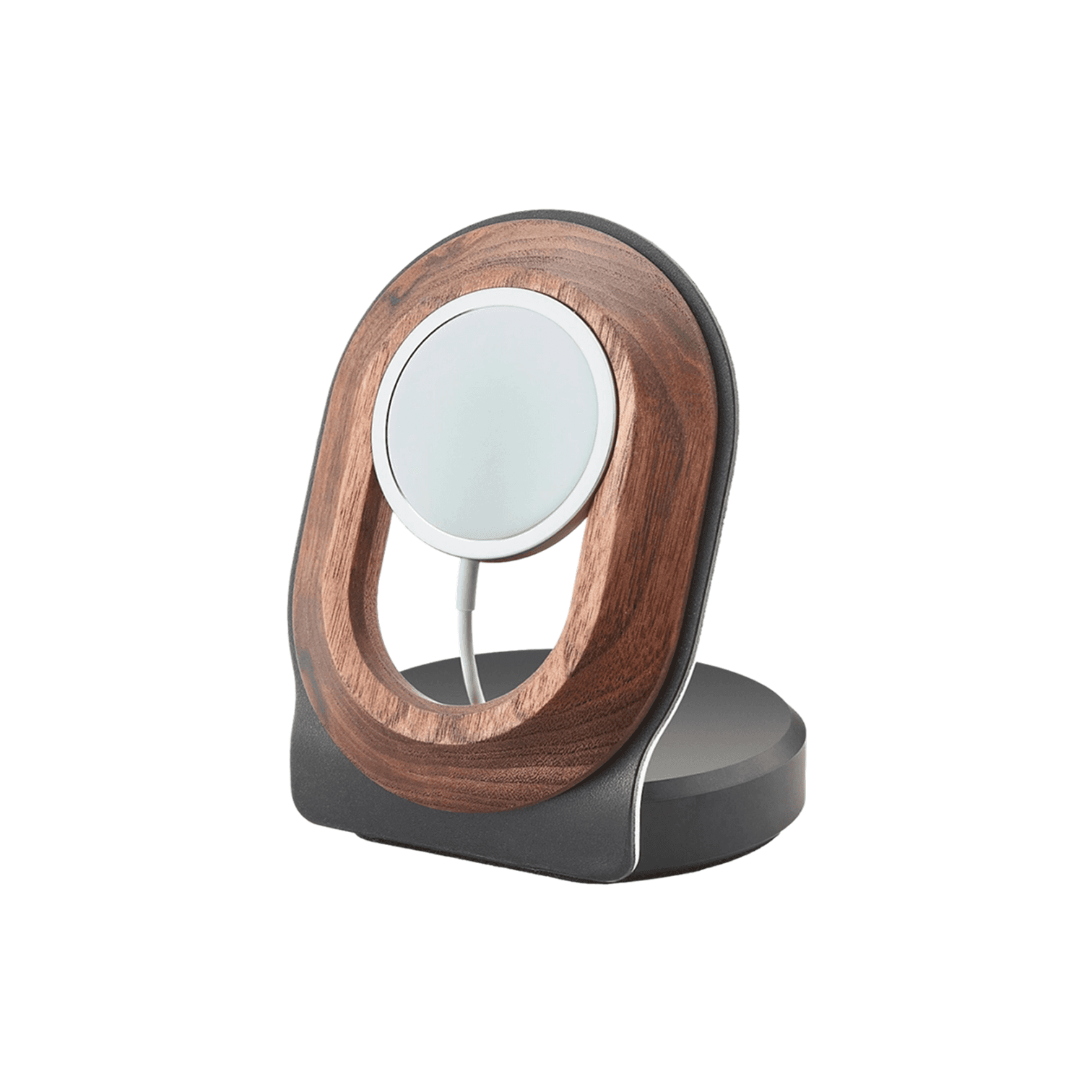
The grain pattern varies with each piece, a reminder that handcrafted workspace tools carry individuality even within a system. MagSafe technology is invisible here, embedded within wood that ages visibly. Over time, the surface darkens and smooths. Fingerprints accumulate. The object becomes marked by use, which is part of its appeal.
Structure Without Sterility
Raico's Vertical Laptop Stand takes a different approach to the same principle. Designed to hold a MacBook upright when closed, it frees desk real estate while maintaining visual coherence. The wood here is thicker, structured to bear weight without flexing.
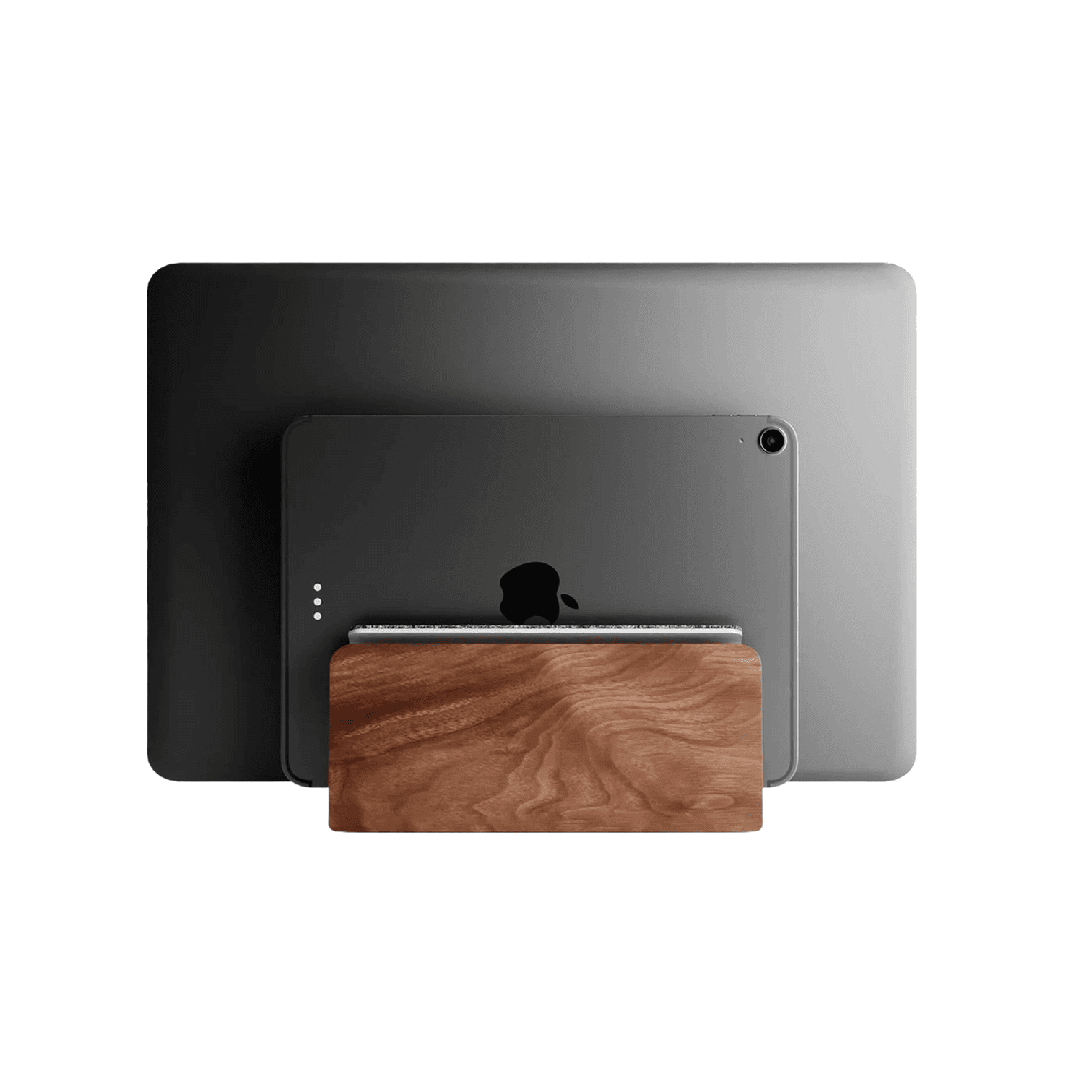
For those working across multiple devices or simply seeking desk organization that doesn't rely on wire baskets and plastic bins, the stand becomes essential infrastructure. It anchors a setup without dominating it.
Layered organization finds its expression in the Ugmonk Valet Tray Bundle. Three walnut trays nest together, each sized for different scales of keeping. The largest holds notebooks or tablets. The middle tier catches pens and charging cables. The smallest becomes home to rings, earbuds, or paper clips.
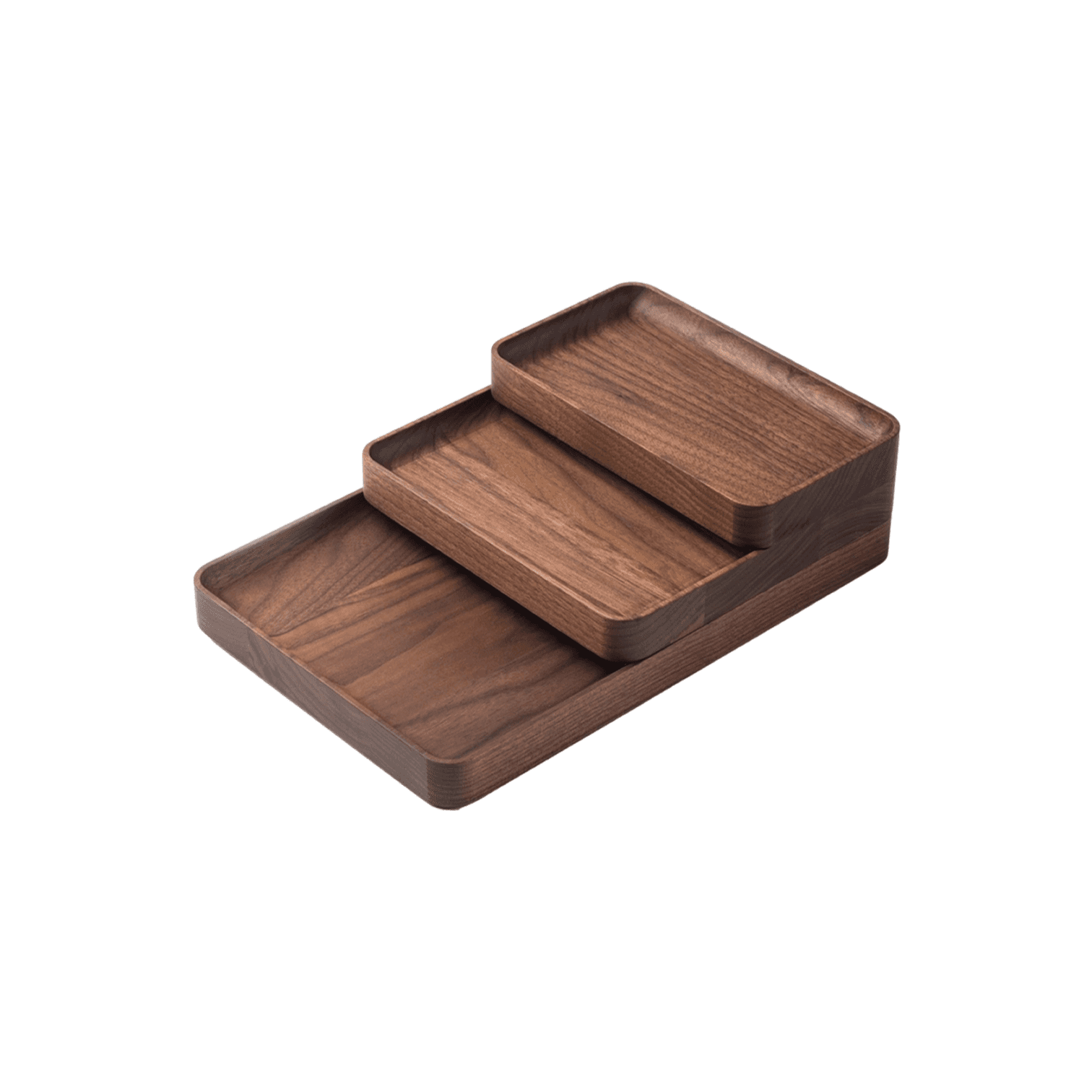
This is modular thinking rendered tactile. The trays can stack vertically to save space or spread across a surface to create zones. Their rounded corners and smooth finish invite handling. Unlike plastic drawer inserts that hide clutter, these walnut workspace accessories make organization visible, even elegant.
Small Acts of Order
Not every object needs to solve a problem. Some simply establish rhythm. The Ugmonk Gather Wood Zigzag Tray serves this role well. Its ridged surface holds pens, keys, or SD cards at angles that make retrieval intuitive. Made from walnut with a contrasting darker edge, it functions as both tool and sculpture.
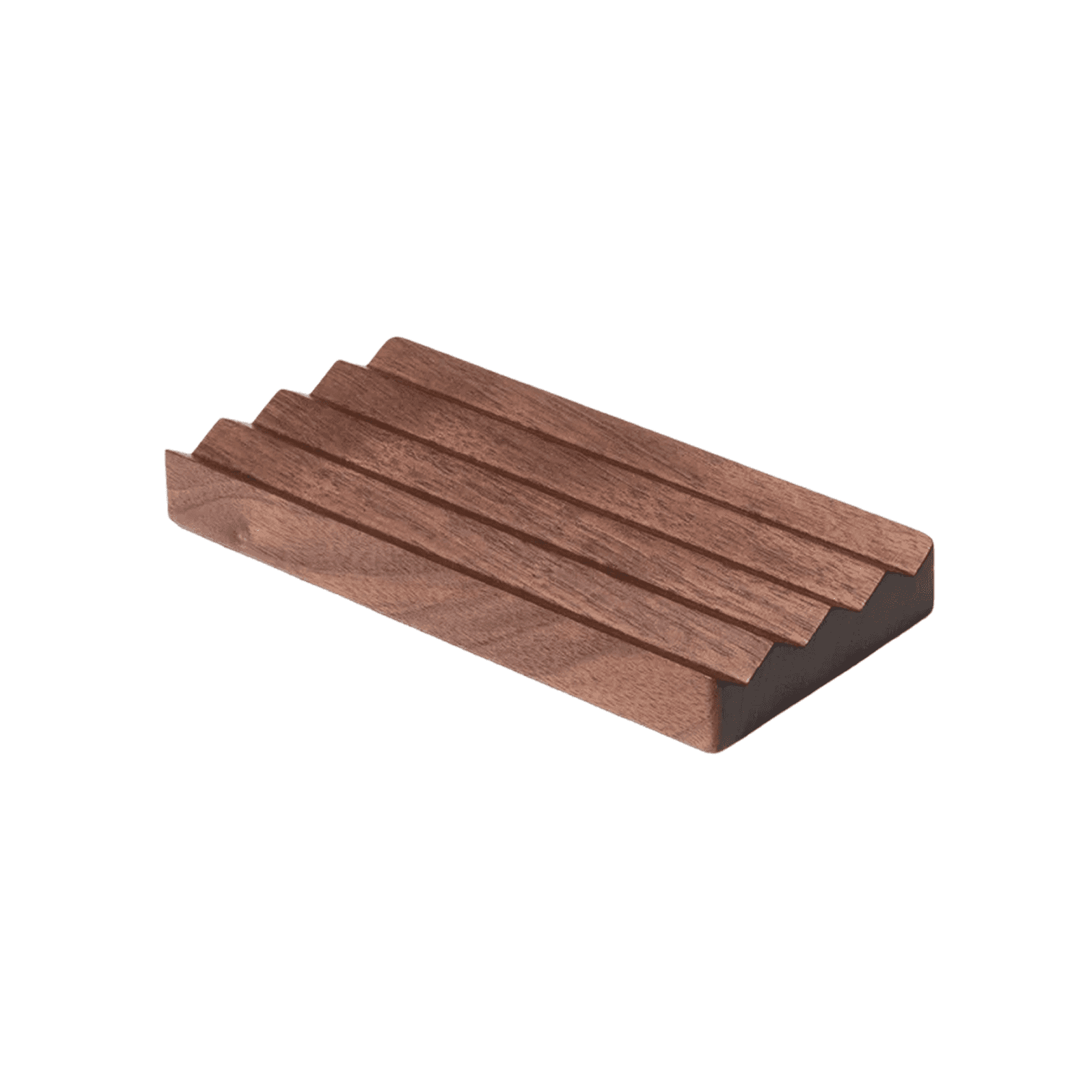
Placed near a keyboard or at the corner of a monitor, it absorbs the small debris of a workday without becoming a junk drawer. This is sustainable desk setup thinking: fewer items, more intention.
Wooden desk accessories for minimalists operate on a frequency different from tech. They do not update. They do not sync. They exist in a slower register, one that complements rather than competes with digital work. In a Japandi office, these objects form a constellation. Each has clear purpose. Together, they create an environment where focus feels possible again.
The Long View
Choosing walnut workspace accessories is a commitment to objects that outlast their context. The desk will host different projects. The laptop will be replaced. But the tray, the stand, the organizer remain. They form a through line, material anchors in a workspace that otherwise shifts constantly. This is the logic of warm minimalism: restraint without austerity, simplicity without coldness.
Craft-focused office design does not announce itself. It accumulates slowly, object by object, until the space feels coherent without effort. The wood darkens. The routine solidifies. The workspace becomes less a stage for productivity and more a place where work happens naturally, held by objects that understand their role.
